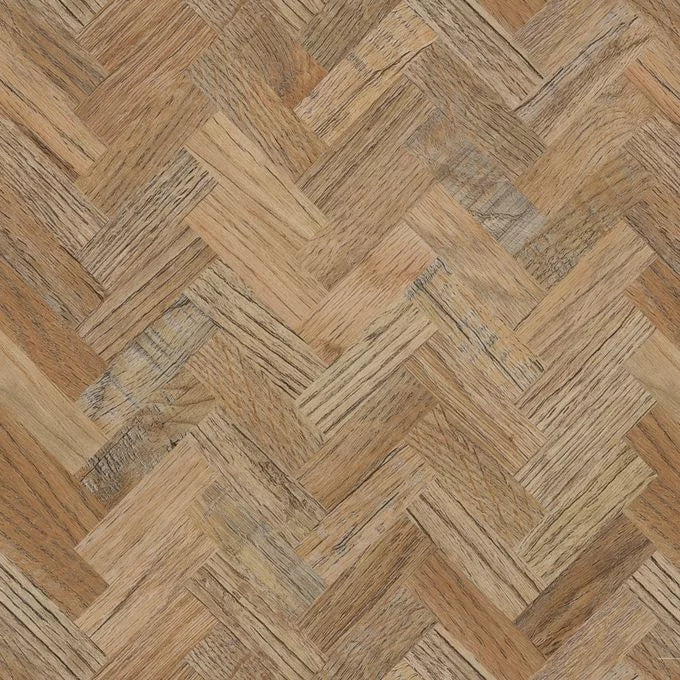
What Is Parquet Flooring And Is It Making A Comeback Via LVT?
Share
Using luxury vinyl tiles comes with a wide range of practical and aesthetic advantages, but a huge example of the latter is that it allows you to adapt your flooring to interior design trends without the significant investment it would otherwise take.
A great example of this is parquet flooring, a form of wooden tiling that is both expensive and relatively impractical in its original form, but has found a new lease of life thanks to highly advanced materials, affordable patterns and the ability to quickly install and replace at will.
To understand the appeal and why LVT is the best approach to getting a parquet look, it is important to explore why it was made in the first place.
Like with a lot of interior design trends, it begins at the Palace of Versailles.
Little Compartments Of Versailles
Exactly where parquet came from is not entirely clear, although it is believed that it originated from Italian mosaic work in the 16th century, before being used in various palaces in France.
However, whilst it was used in certain palaces owned by the House of Medici, most notably Luxembourg Palace, perhaps its best and most famous initial application was in the famous Palace of Versailles.
Built on a swampland for King Louis XIV with what was essentially an unlimited budget, the Palace of Versailles had a range of aesthetic and technological advances far ahead of anywhere else at the time.
Interestingly, whilst parquet is commonly an aesthetic choice today, it was initially installed for more practical reasons.
Initially, the Palace had marble floors, which were strong and very beautiful, but they also showed dirt and grime more obviously. This meant that they needed to be washed, which rotted the wooden beams already straining to hold the heavy stone tiles up.
Parquet was lighter, thinner and more practical, whilst still retaining that sophisticated style and luxurious finish.
The Palace of Versailles was not the originator of the concept, but it was the genesis of its popularity, and it would spread throughout Europe and later the world.
How Popular Was Parquet In Britain?
Parquet was a particularly popular timber pattern in most of continental Europe before spreading to North America, but one exception to this was in the UK.
Back when it was known as Denmark House, Somerset House in London featured a parquet floor installation, as did the bedchambers of the Queen at Ham House.
Other than these, parquet flooring was typically not done, with bare floorboards a more universally popular flooring design that transcended class during this era.
Following the rise of the Rococo movement, the popularity of parquet swelled and continued to surge in popularity until the 1930s in Continental Europe, but that popularity did not extend to the UK, which preferred a more Palladian style in the 1730s and had already started to adopt carpeting as the flooring style of choice.
With carpets and rugs as popular as they were, they would have covered up parquet flooring and rendered it somewhat unnecessary.
There was a brief point where herringbone parquet emerged during an era of reform in interior design following the “Battle of the Styles”. The more austere, versatile parquet style fitted well with a more austere era.
This again faded by the 1930s, where industrial carpetmaking reached a point that wall-to-wall carpeting became nigh-universal in the home and widely used in offices and retail establishments for the rest of the century.
Old parquet floors were covered up, and newer buildings simply did not bother with elaborate flooring that would simply be replaced.
This would change in a big way by the start of the new millennium.
Has LVT Helped Parquet Make A Comeback?
A growing number of interior design styles are eschewing wall-to-wall fitted carpets in favour of tiles, rugs and bare floors. This has created an interest not only in traditional hardwood floorboards but also in parquet designs.
The rise of interior design movements based around minimalism has created a greater emphasis on natural materials. In particular, wooden patterns and parquet have become highly prized for bringing sophisticated style to a room without looking overly ostentatious.
Whilst there are specialists who will install hardwood parquet, by far the easiest and most practical way to enjoy herringbone parquet is through luxury vinyl tiles, which have all of the aesthetic benefits of wooden flooring but without the downsides that come with it.
They are durable, long-lasting, water-resistant, and tiles can be easily replaced when they start to wear out.
